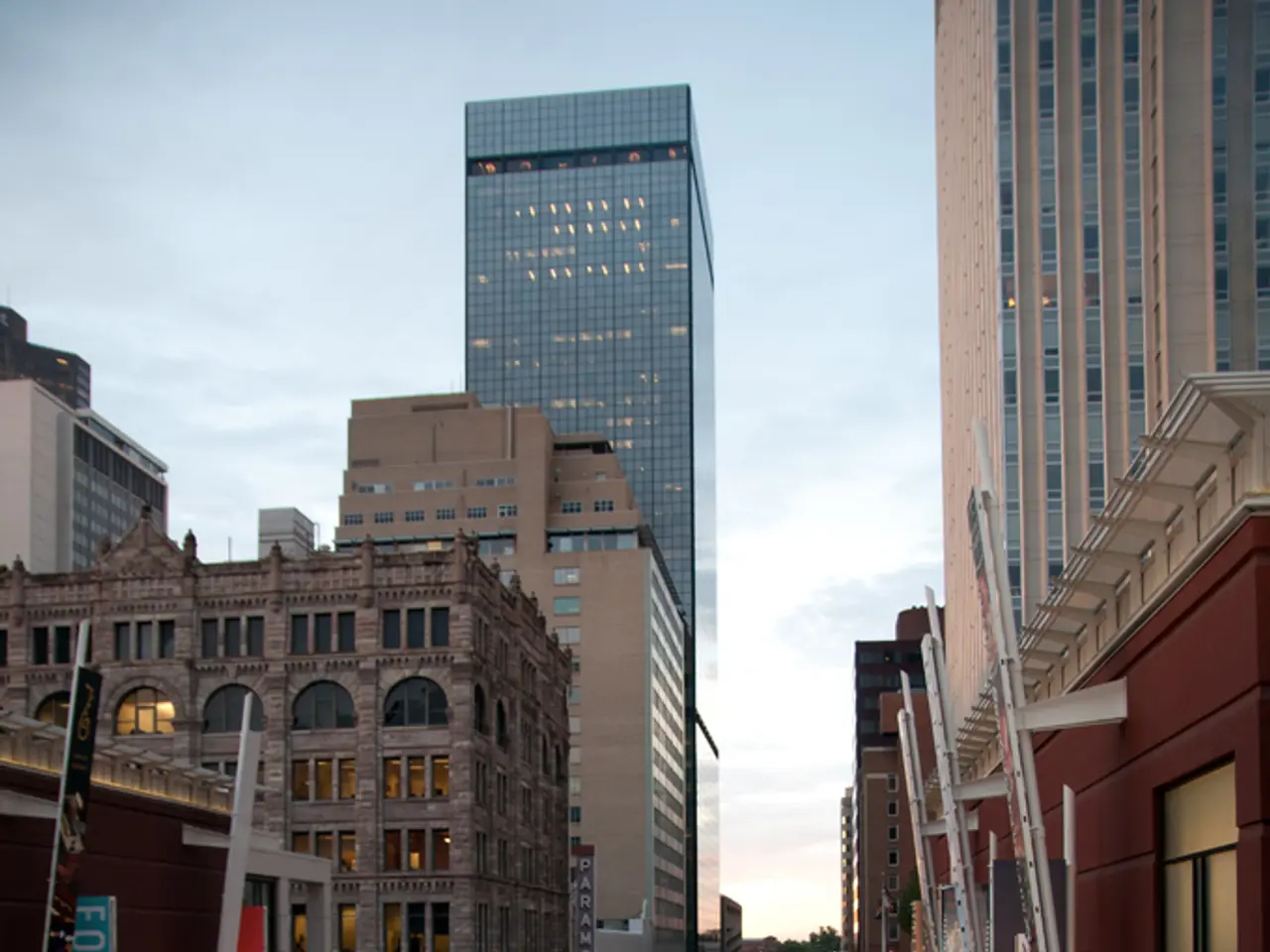L.A. has consistently been struck by disasters such as fires and floods; yet, strategic marketing attracted endless waves of new residents nevertheless
Rising from the Desert: The Rapid Growth of Los Angeles
Los Angeles, a city known today for its vibrant culture and bustling metropolis, has a rich history of resilience and transformation. The city's remarkable rise to prominence began in the 1920s and 1930s, a period marked by explosive population growth, aggressive marketing, and rapid urban development.
In 1933, Morrow Mayo's book "Los Angeles" was published, capturing the spirit of the city during this transformative era. Mayo, a writer, critically described Los Angeles as a commodity and a city with a spirit of boost. The city had already overtaken San Francisco in population, a testament to the unprecedented growth it had experienced.
The growth of Los Angeles was fueled by a massive internal migration of nearly 1.5 million new residents during the 1920s. Drawn by the mythos of a fresh start and real estate opportunities, these migrants were attracted to the city's mild climate, romantic mythology, and the promise of a better life.
The real estate boom and speculative frenzy that followed were instrumental in driving this urban expansion. Speculators and land developers vigorously promoted the region, creating new towns, hotels, and infrastructure before established economies were present. This speculative foundation led to extraordinary urban expansion, despite the city's initially limited industrial economic activity.
The promotion of Southern California's Mediterranean climate began in the first decade after the Gold Rush and continued into the new century. Travel writers praised the region's moderate temperatures and lack of humidity, claiming it had health benefits. This marketing, combined with the region's romantic mythology, added to the population growth and urban sprawl.
The real estate-driven boom led to rapid construction of sidewalks, community halls, and other urban amenities, facilitating the growth of what became a substantial metropolitan area. Los Angeles also benefited from transportation advances, such as railroads and highways, and the advent of the automobile, which were critical for its sprawling development pattern during this era.
By contrast, San Francisco's post-1906 earthquake reconstruction was slower, and its growth more constrained geographically, while Los Angeles capitalized on vast available land for expansion. The national economic context of the 1920s included widespread speculative investment and credit availability, allowing real estate booms in places like Los Angeles, similar to the Florida land boom of the same era.
Despite these challenges, Los Angeles faced numerous natural catastrophes in the mid-1800s, including droughts, torrential rains, and cattle deaths due to drought. The city even needed to be "conjured into existence" as it lacked natural resources like water and a port. The water for Los Angeles came from a river valley 200 miles away, and its electricity from a river canyon 300 miles to the east.
Today, Los Angeles continues to strive to build a city for everyone, overcoming its past challenges and embracing its rich history. The city's resilience and determination are evident in its continued growth and development, making it a city that truly embodies the spirit of the American Dream.
References:
- Hiltzik, Michael. Golden State: The Making of California. Mariner Books, 2025.
- Mayo, Morrow. Los Angeles. 1933.
- Truman, Ben C. Homes and Happiness in the Golden State of California. 1885.
- Various sources, 1849-1940.
- Amidst its growth, Los Angeles had faced severe droughts, requiring the city to fetch water from a river valley 200 miles away, a testament to its resilience.
- The city's flourishing real estate business played a significant role in the urban expansion of Los Angeles, although it was initially limited in industrial economic activity.
- In the midst of the California drought, Los Angeles' growth did not halt, with the city turning to infrastructure development, including sidewalks and community halls, to facilitate its metropolitan growth.
- Similarly, during periods of economic downturn, like the Florida land boom of the same era, the city's real estate market continued to thrive, demonstrating its robustness.
- As politics and policy-and-legislation shaped the course of the city's growth, the burgeoning economy also impacted its business landscape, particularly real estate.
- In response to the hotly contested California wildfires, Los Angeles put forth efforts to improve its infrastructure for the betterment of the health and well-being of its residents.
- The University of Southern California (USC) serves as a leading voice in the city's general news, offering insightful opinions on various topics such as urban development, infrastructure, and the overall direction of Los Angeles' future.








